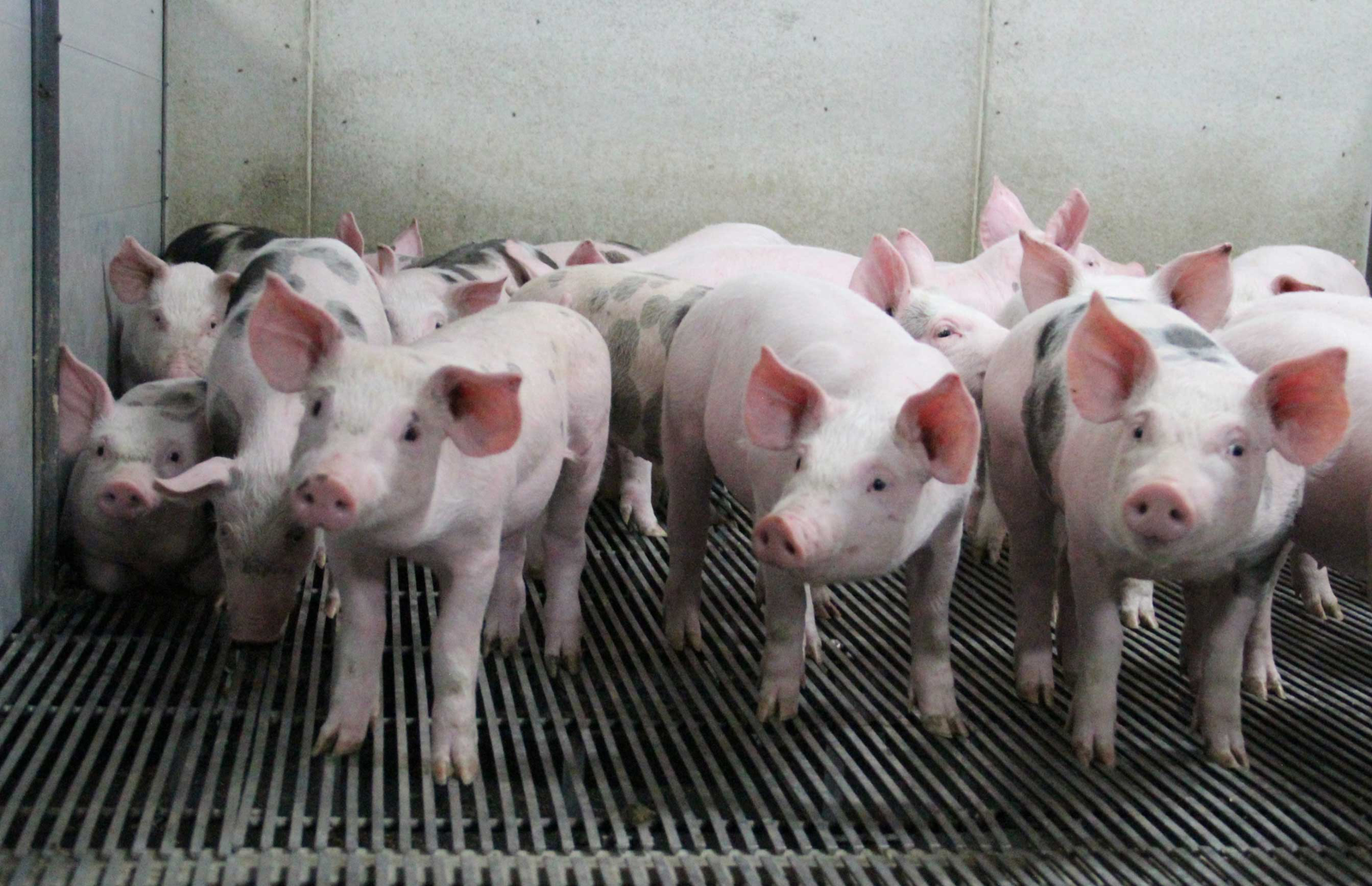Improve pig health by gaining homogeneity with a versatile enzyme

Recent trials confirm that the introduction of a versatile NSP (Non-Starch Polysaccharides) enzyme in pig diets, improves performance and homogeneity of animals from weaning to slaughter. This has a positive impact on health management by a reduction of re-allotting and increased clean downtime.
Recent trials confirm that the introduction of a versatile NSP (Non-Starch Polysaccharides) enzyme in pig diets, improves performance and homogeneity of animals from weaning to slaughter. This has a positive impact on health management by a reduction of re-allotting and increased clean downtime.
The homogeneity within batches is not always measured or reported in trial reports although it is worth looking at. Pig producers know that in respect of a minimal clean downtime between batches and a limited mixing across batches, it is necessary to ensure proper animal health management. Low performance and high heterogeneity between animals make it difficult. In practice, it means that more homogeneous animals spend less time in the facilities because the time gap between the first and the last individual to reach target weight is reduced. More homogeneous animals also means less mixing both after weaning and when animals are brought to fattening rooms, which reduces stress and the spread of pathogens. Enzymes can contribute to increase piglets and pig homogeneity; as proven by recent research achieved in collaboration with Adisseo testing a NSP enzyme (Rovabio Excel), added on top of the usual formulation.
Besides the general effect of an efficient NSP enzyme to increase digestibility, an enzyme containing a wide range of enzymatic activities may have more assets than a mono-activity enzyme to impact each individual metabolism and counteract animal diversity.
Less variability of final piglet weight
In an experimental station of a customer in France, a trial was conducted on piglets fed a barley-based diet from 42 to 70 days of age. Daily weight gain was improved by 3.9%, and feed conversion rate was reduced by 4.3% with the NSP enzyme (see table 1). Moreover, the coefficient of variation decreased by 16%, proving the effect of the enzyme on homogeneity of the batch. Graph 1 clearly shows that final weight of the lightest piglets is significantly increased with the NSP enzyme (27.2kg vs 23.7kg).
This trial is underpinned by the results observed in two other trials carried out in Germany. The Nürtingen-Geislingen University of Applied Sciences showed that the addition of the NSP enzyme on a wheat-based diet improved piglet growth performances (Table 2) with a final weight increase of 1.0kg or +3.4%. The coefficient of variation on final body weight was reduced by 20% and the gap between the lightest and the heaviest piglets was significantly smaller – from 20kg to 13kg with NSP enzyme (Graph 2).
At the University of München, piglets fed a corn-soybean diet showed that the NSP enzyme significantly improved piglet performances (Table 3). As a result, the enzyme fed piglets were heavier (+3.7 % at 70 days). Final weight variability was significantly reduced by 26%.
From the piglet weight distribution at the end of the three experiments, the number of days needed to reach target weight could be determined. The first indicator to be considered is the number of days needed to bring the last piglet to target weight. However, to be closer to management practice on field, a second indicator was calculated: the number of days needed to bring 75% of the piglet batch to target weight, when usually the batch can leave the weaning facilities.
A positive impact kept until slaughter
A trial from weaning to slaughter carried out in 2012 proved that the reduction of variability with the NSP enzyme is also demonstrated during the fattening period, and that the time needed to reach slaughter weight is more homogeneous with NSP enzyme across individuals.
This trial conducted on corn-based diets at the Kasetsart University in Thailand, shows that the NSP enzyme decreases feed conversion ratio by 4.5% and reduces the variability within batch by as much as 72%. The faster growth results in a shorted fattening period by three days, and the reduction of heterogeneity allows reducing the fattening period by seven extra days for 75% of the batch to reach 100kg bodyweight. Altogether, with the addition of a NSP enzyme from weaning to slaughter, the fattening period can be reduced by 10 days and the number of overweight or downgraded pigs can be reduced potentially.
In these four trials with different diets and metabolic phases, in all cases, growth performances and animal homogeneity were significantly improved with NSP enzyme until slaughter. This has been possible thanks to the versatility of the enzyme. The fact that it contains 19 enzymatic activities allows a positive response over animal homogeneity on diverse diet types and unique metabolic specificities.
Trial reports are available upon request: caroline.joos@adisseo.com
 Beheer
Beheer





 WP Admin
WP Admin  Bewerk bericht
Bewerk bericht